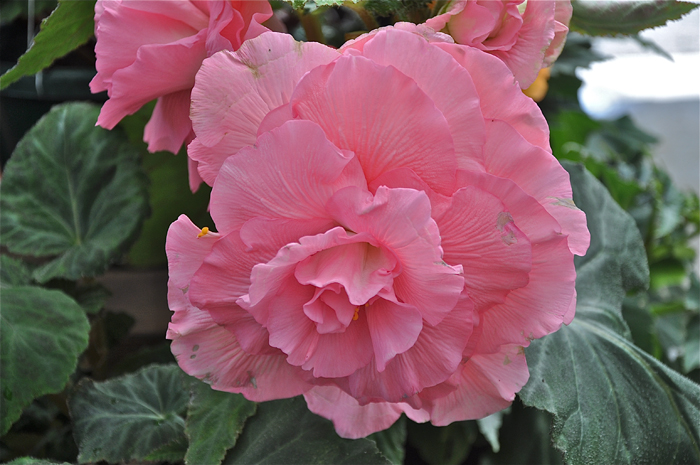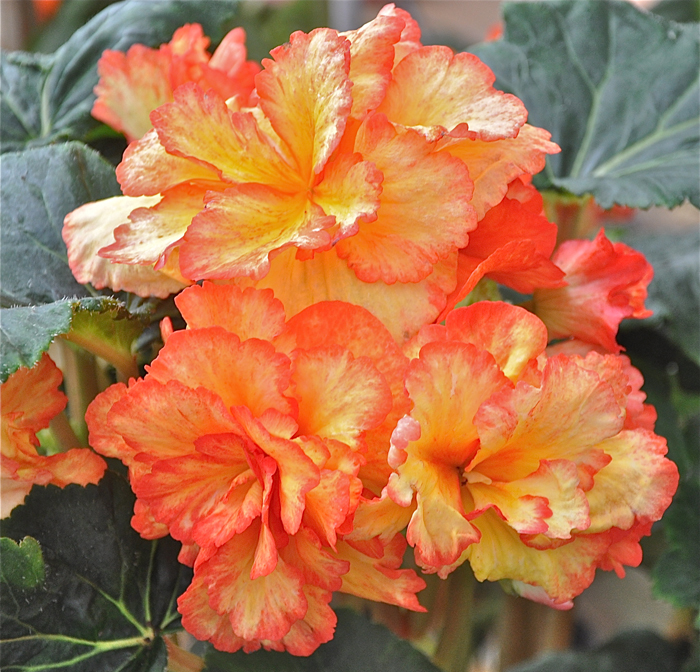Flower Photos: Beautiful Begonias

Beautiful begonias

With so much of the Northern Hemisphere being engulfed with the cold of winter, a look at what the promise of nature holds in just a few short months might help in surviving another wintry day. A perfect symbol of the summer to come must surely be the marvelous blooms of begonias.
Spectacular blooms

The blooms of tuberous begonias produce some of the most spectacular floral displays during the summer and early fall months. Their flowers come in every color except blue and range from single to full double blooms. These amazing flowers range in size from blossoms of 0.5 inch (1.3 centimeters) in diameter to the size of a standard dinner plate. Some flowers are scented and some even have petals tipped with differently colored edges.
Their native home

Begonias are native to the warm, moist forests of tropical and subtropical lands of Asia, Africa and South and Central America. They are members of the Begoniaceae family and more than 1,400 species have been identified. Some species have been domesticated and have become spectacular indoor houseplants.
Types in nature

There are three types of begonias found in nature. Fibrous begonias include species known as wax and angel wing begonias and are best suited for outdoor growth. Rhizomatous begonias have spectacular foliage but their blooms are considered to be insignificant. Tuberous begonias, whose flowers are pictured in this story, produce beautiful, large flowers and often resemble a fully opened rose when in full bloom.
A discovery made

The discovery of begonias is credited to Charles Plumier, a Franciscan monk, who came across the beautiful flowers while exploring Brazil in 1690. Father Plumier was involved with an exploration party in search of medicinal plants in the rainforests. He named the flowering plant after the then French governor of Haiti, Michel Begon, who was Father Plumier’s favorite New World botanist.
The first of such honors

Father Plumier’s decision to name begonias after another botanist was the first time such an honor had been bestowed and it began a worldwide tradition for naming new plant species. The name begonia became permanent for the species in 1753 when Carl Linnaeus used it in his book "Species Plantarum."
Many uses

In China, begonias were used as medicine to stop swelling, ease an upset stomach, slow the symptoms of a cold and disinfect skin wounds. Other nations were known to use the beautiful begonia to ease burns, cure kidney ailments and stop a toothache.
Get the world’s most fascinating discoveries delivered straight to your inbox.
The birds and the bees...

Begonias are monoecious, having both unisexual female and male flowers blooming on the same plant. Female flowers have a large inferior ovary while the male flower contains multiple stamens. The leaves of most begonia species are large and many are variegated. Leaf arrangement is most commonly asymmetric.
Yummy for the tummy

Begonias have been used for centuries as a food source. Both leaves and flowers can be cooked or eaten raw and are a great source of vitamin C. The beautiful flowers are scattered on top of salads in China, Indonesia and Brazil. The stems of tuberous begonias are similar in flavor and taste to rhubarb. Indonesians make a sauce from begonias and pour it over fish dishes.
Beautiful blooms

Native begonias grow best in shady, moist environments. Modern hybrids have now been produced to grow well in both drought conditions as well as in full sunlight. So if winter's grip seems to be relentless, just hang on, for summer will be coming once again and so too will the beautiful blooms of begonias.


